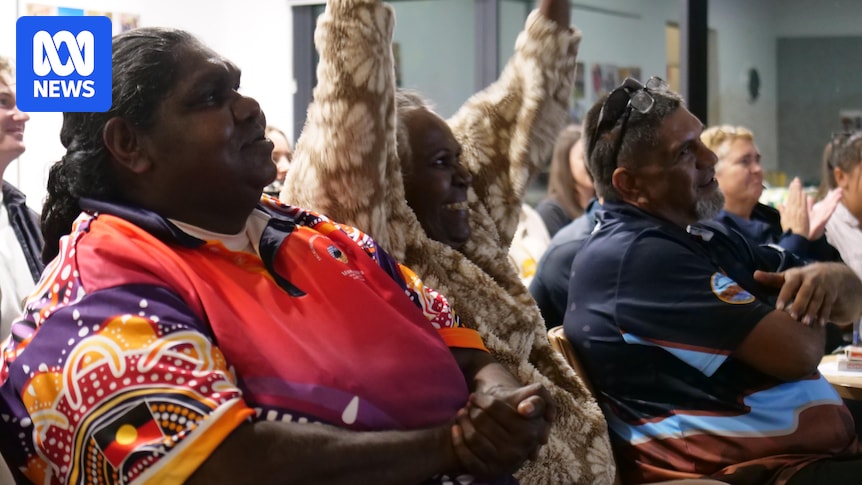Another Australian site has been added to the UNESCO World Heritage List, but among the celebrations are fears that the decision has come too late.
The traditional custodians of Murujuga, in Western Australia’s Pilbara region, have fought to have their country’s physical and spiritual significance recognised and protected for decades.
“Nearly 30 years of education of this culture on this country has come to fruition,” Murujuga Aboriginal Corporation director Vince Adams said.
Murujuga is home to more than one million petroglyphs. (ABC Pilbara: Alistair Bates)
Belinda Churnside, also a director of the corporation, said the listing was a “testament to the true dedication” and resilience of Aboriginal people.
But scientist and rock art researcher John Black fears the damage to the site has already been done.
“An enormous amount has been lost,” he said.
“When you drive into Murujuga now … it looks like an industrial complex, not a sacred, World Heritage-listed gallery.”
Woodside’s Pluto Gas plant sits within Murujuga. (ABC Pilbara: Charlie McLean)
Dr Black hoped the islands off Murujuga, which have been included in the World Heritage area, would now be protected.
“There is so much on the outer islands that have lovely petroglyphs that need to be protected, and that will happen 1752336070.”
‘Tip of the iceberg’
Mr Adams acknowledged much had already been lost to industrial development at Murujuga.
He said elders in the early-2000s were unhappy about an expanding industry presence and decided a World Heritage bid was the best way to safeguard the rock art’s future.
In the years since approvals have been granted for two more liquid natural gas trains, two fertiliser plants, and a provisional approval to extend the North West Shelf gas project to 2070.
“We can’t stop them — we’ve tried. We’ve had people protest … still it carries on,” Mr Adams said.
Vince Adams says his elders were the first to push for the listing. (ABC Pilbara: Alistair Bates)
He saw the listing as a bargaining chip that Murujuga custodians could use.
“This is the tip of the iceberg for us,” the Yindjibarndi man said.
“We tell our story from here. Most importantly we can share our story to the world.”
Yindjibarndi woman Michelle Adams says the listing opens many doors. (ABC Pilbara: Alistair Bates)
Michelle Adams, who was a cultural advisor to the World Heritage application, said the listing provided more security than what the government could offer.
“We know that Murujuga World Heritage is a threat to industry, and so it should be,” she said.
“It’s deep and it’s beautiful and it has to be respected to the highest degree.”
Traditional custodians were overwhelmed with emotion as the decision came through. (ABC Pilbara: Alistair Bates)
Last-minute changes
Ahead of the Paris committee meeting this week the nomination was in serious doubt.
The International Council on Monuments and Sites (ICOMOS), which advises the committee, had recommended knocking back the bid due to concerns about the impact of industry emissions.
It was only at the eleventh hour that federal Environment Minister Murray Watt secured an amendment that saw the bid succeed.
The nomination’s success was far from assured before the amendment was tabled. (Supplied)
“In the end, what persuaded the committee was both the scientific evidence that was put forward, which disputed some of the claims that were being made, but also the genuine passion from the traditional owners to see this World Heritage listing be secured,” Mr Watt said in Paris.
The amendment included softened language regarding the prevention of further industrial development.
Wording was changed from “recommends” to “encourages” in relation to a variety of protections and studies at the area.
Raelene Cooper, advocate for Save our Songlines, described the amendments as “ludicrous” and said Australia should have accepted the ICOMOS recommendations.
“At the end of the day, we’re looking for the most protections out there,” she said.
Sophie McNeill says action must be taken to prevent the expansion of industrial activity in the area. (ABC Pilbara: Alistair Bates)
WA Greens MLC Sophie McNeill said the amendment “watered down” the legitimate concerns of the ICOMOS.
“We are deeply concerned the rock art now doesn’t have as many protections as the experts think it should have,” she said.
“That’s why we’re calling on the Cook and Albanese governments to roll back that approval of the North West Shelf extension.”
The meaning behind Murujuga’s petroglyphs
Mr Watt said the federal government would ensure Murujuga was protected now and for future generations.
The government agreed to update UNESCO with a report on the implementation of the amendment’s recommendations by the end of 2026.
WA Environment Minister Matthew Swinbourne said the state government would do its part.
“[The WA government] will now implement the strategic management framework and establish the World Heritage property, ensuring the ongoing protection of this significant landscape which has been recognised today,” he said.
Woodside congratulated the traditional custodians of Murujuga on the listing and said it had been a proud supporter of the nomination and assessment process.
